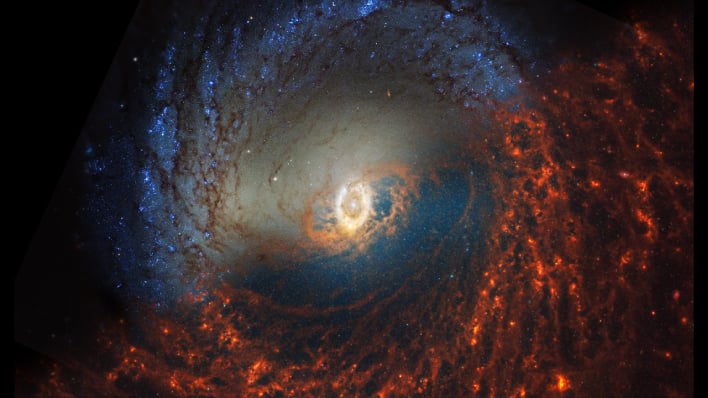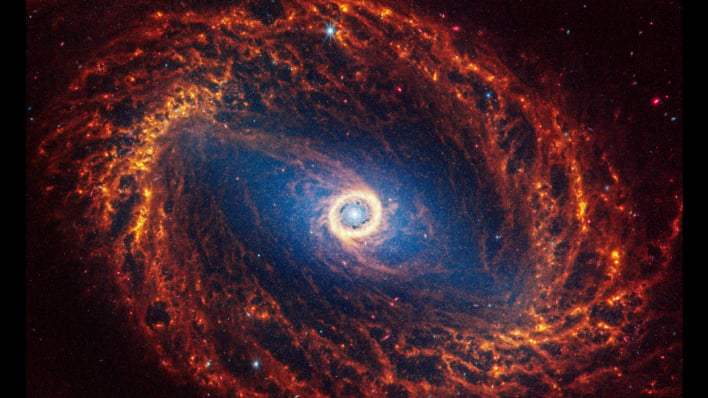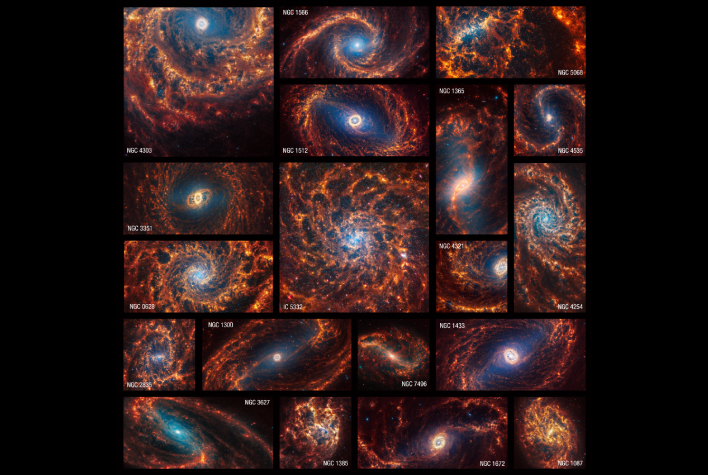NASA’s Webb Telescope Captures Our Spiral Galaxy Neighbors In Breathtaking Detail

The James Webb Space Telescope (JWST) observed 19 nearby face-on spiral galaxies as part of of the Physics at High Angular resolution in Nearby GalaxieS (PHANGS) program. As part of the program, Webb joined Hubble, the Very Large Telescope’s Multi-Unit Spectroscopic Explorer, and the Atacama Large Millimeter/submillimeter Array, in collecting data to gain a better understanding of these nearby labyrinthine structures.
“Webb’s new images are extraordinary,” remarked Janice Lee, a project scientist for strategic initiatives at the Space Telescope Science Institute in Baltimore. “They’re mind-blowing even for researchers who have studied these same galaxies for decades. Bubbles and filaments are resolved down to the smallest scales ever observed, and tell a story about the star formation cycle.”
Webb’s NIRCam (Near-Infrared Camera) was able to capture millions of stars in the images, which are highlighted in blue tones. NASA says that some stars are spread throughout the spiral arms, while others are clumped tightly together in star clusters.
Also captured by Webb’s MIRI (Mid-Infrared Instrument) data was glowing dust, revealing where it resides around and between stars. The glowing dust also places a spotlight on stars that have yet to fully form, as they are still “encased in the gas and dust that feed their growth, like bright red seeds at the tips of dusty peaks.”
Erik Rosolowsky, a professor of physics at the University of Alberta in Edmonton, Canada, describes the glowing dust as being “where we can find the newest, most massive stars in the galaxies.”

When focusing on the interior of these massive structures, some are “awash” in pink-and-red diffraction spikes. “That’s a clear sign that there may be an active supermassive black hole,” explained Eva Schinnerer, a staff scientist at the Max Planck Institute for Astronomy in Heidelberg, Germany. “Or, the star clusters toward the center are so bright that they have saturated that area of the image.”
NASA says there are many avenues scientists can explore with Webb’s images, with the sheer number of stars Webb revealed being a great place to start. “Stars can live for billions or trillions of years,” explained Adam Leroy, a professor of astronomy at the Ohio State University. “By precisely cataloging all types of stars, we can build a more reliable, holistic view of their life cycles.”


